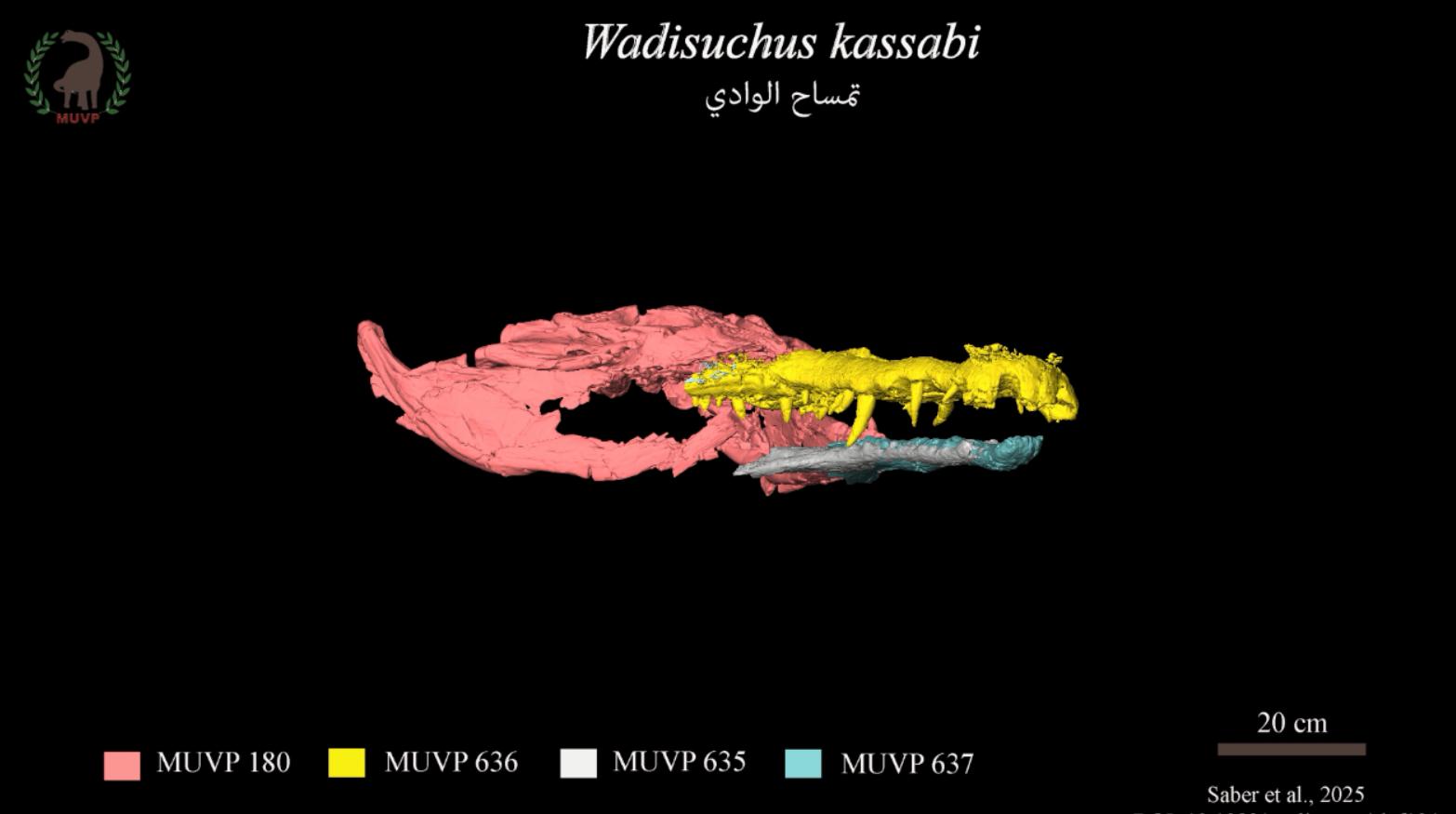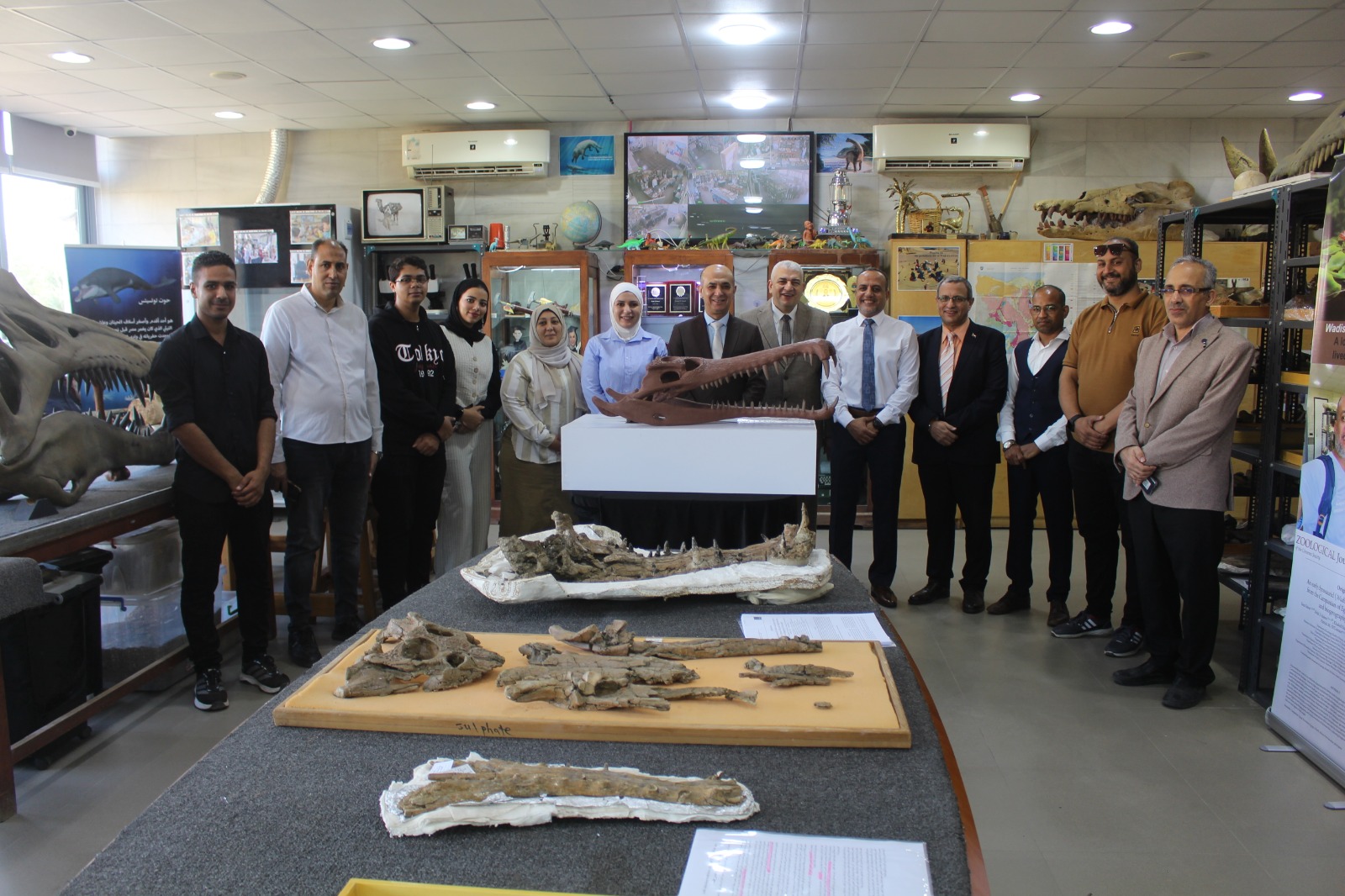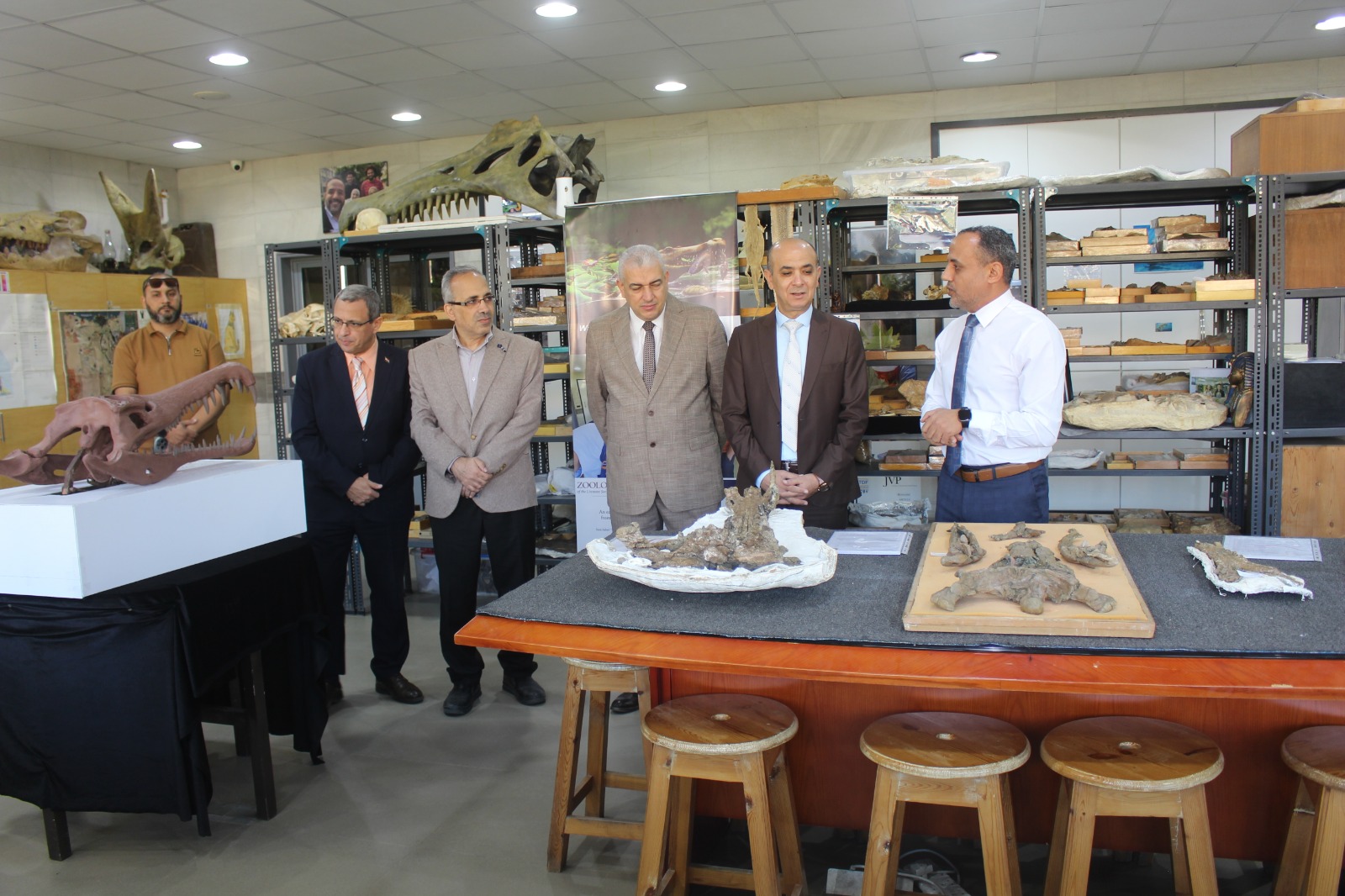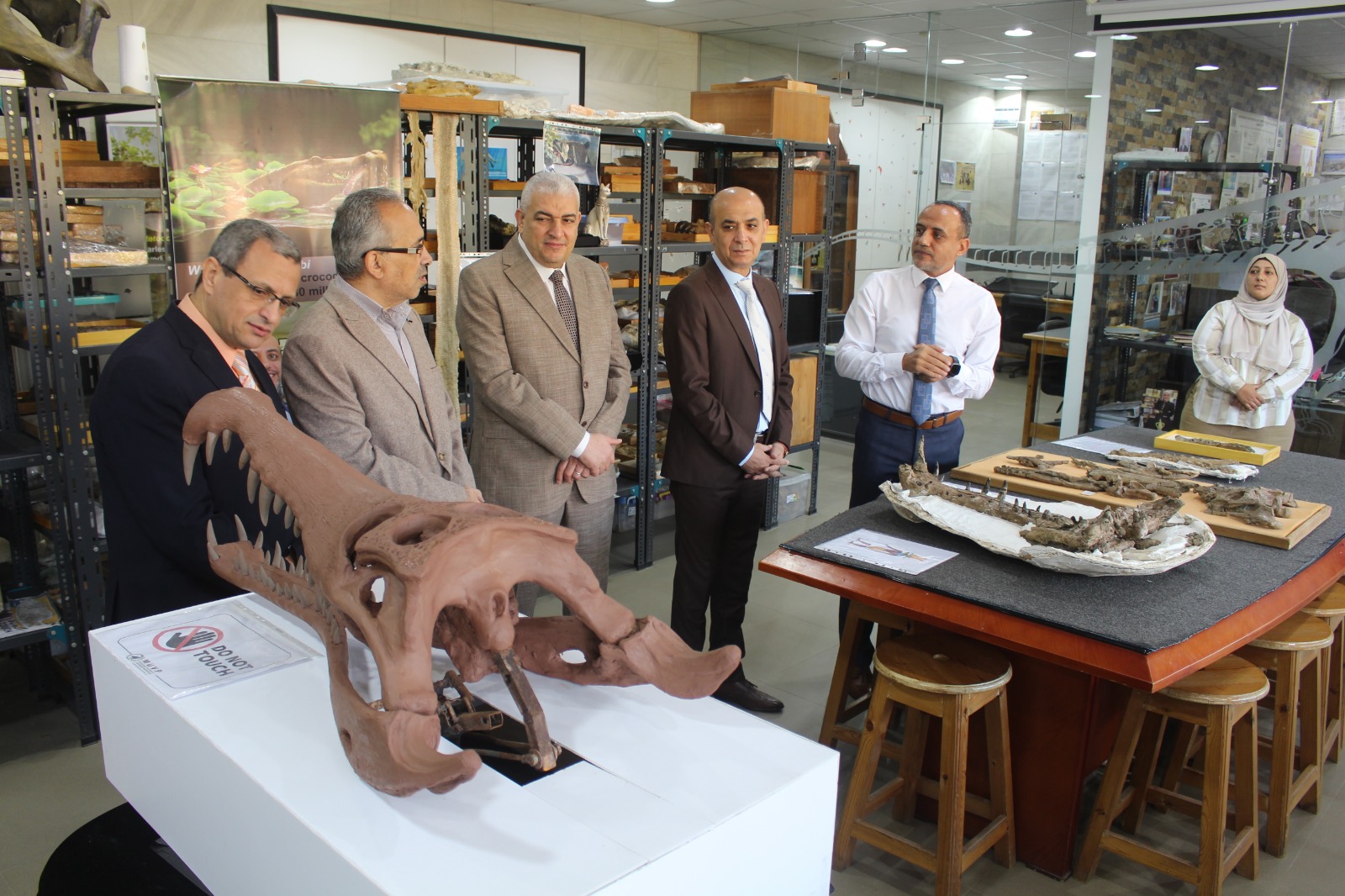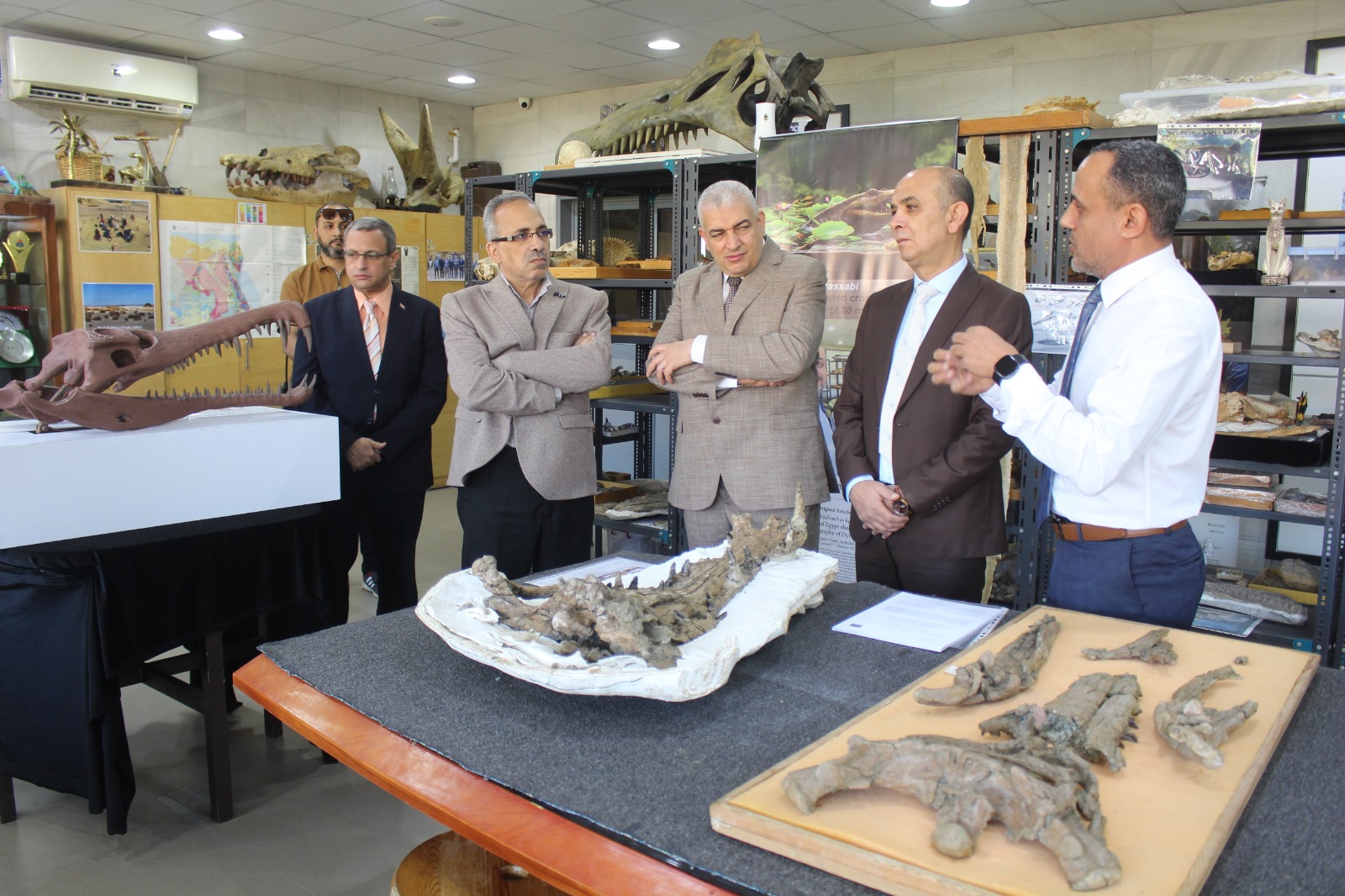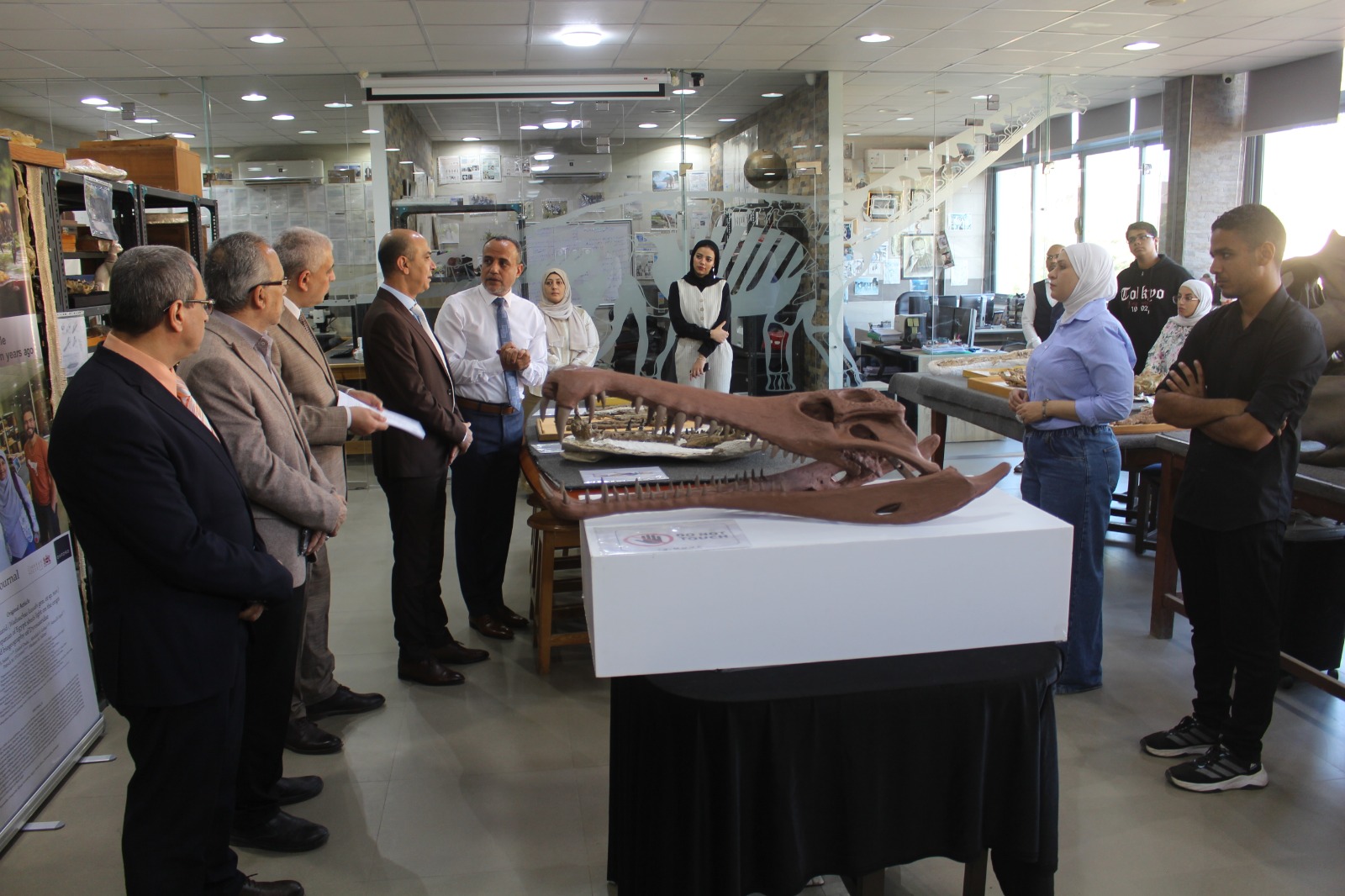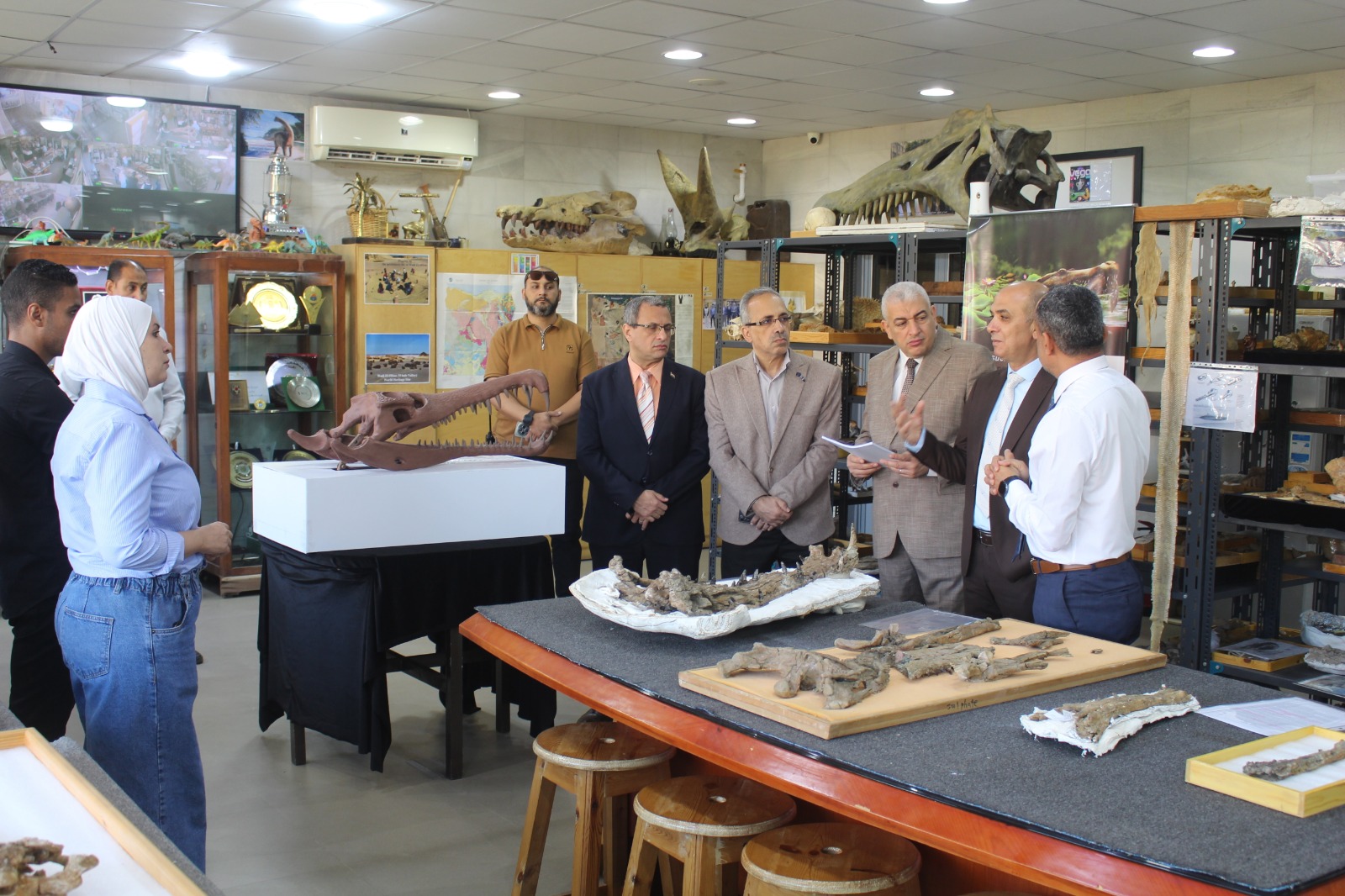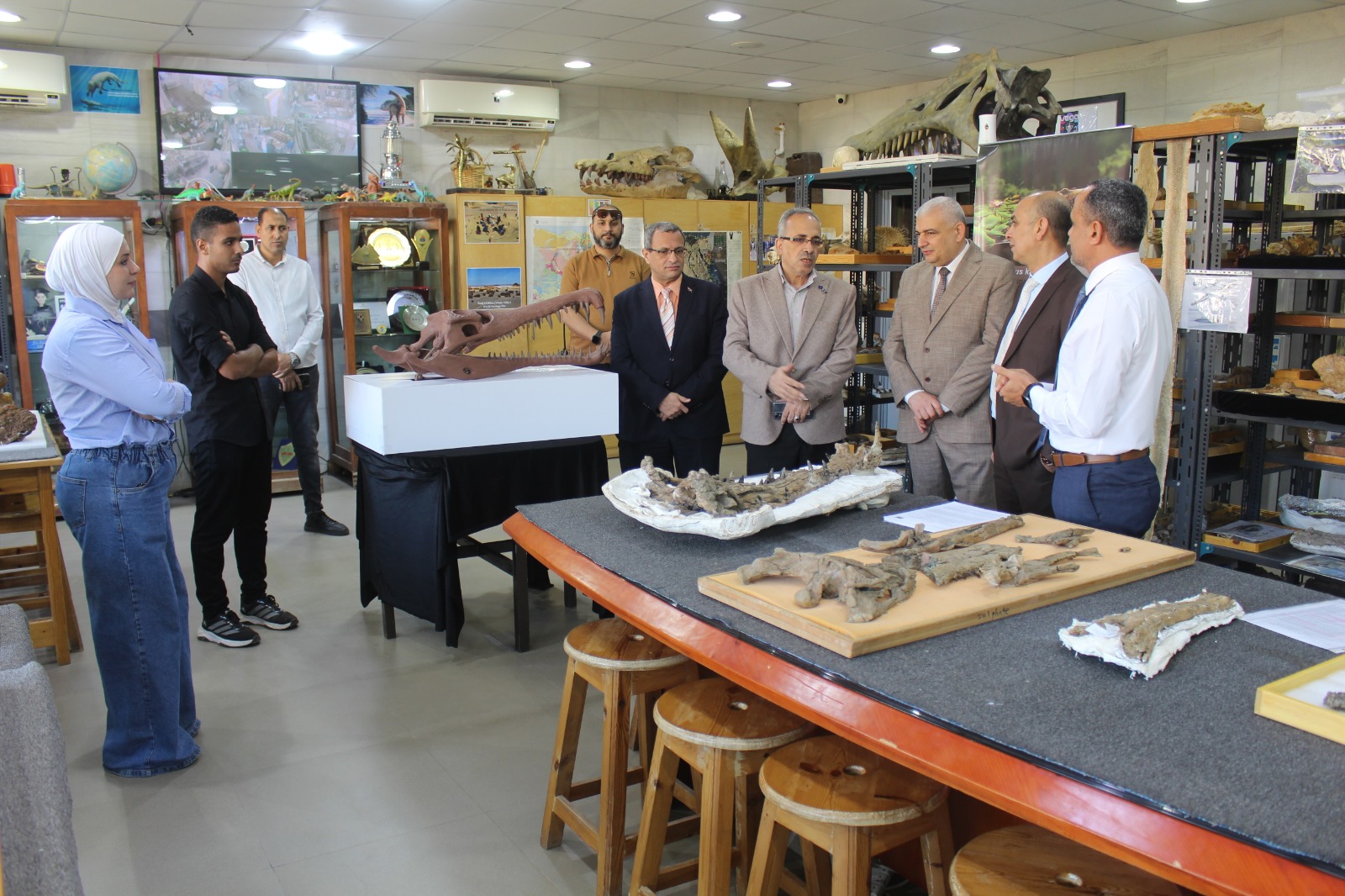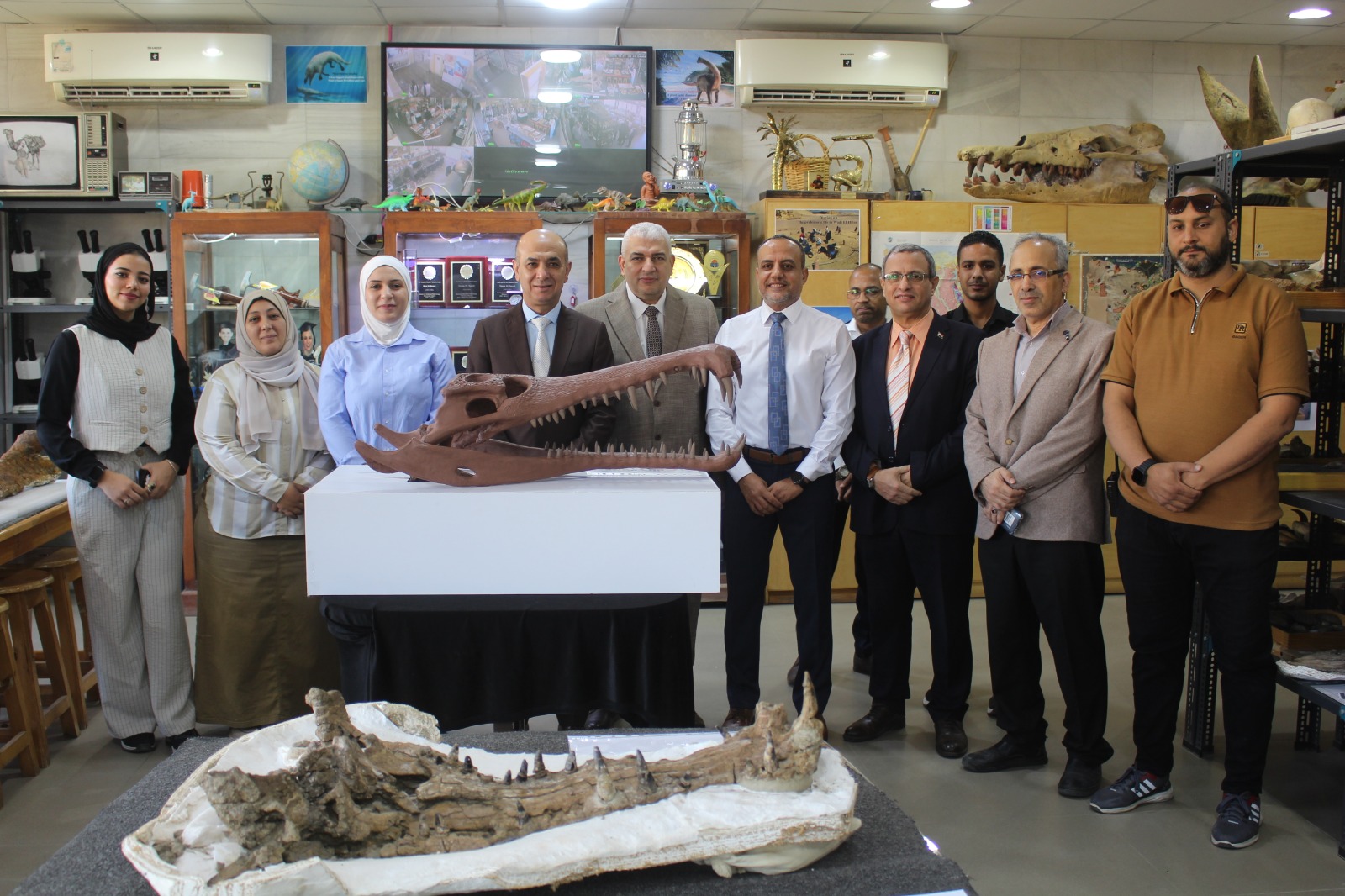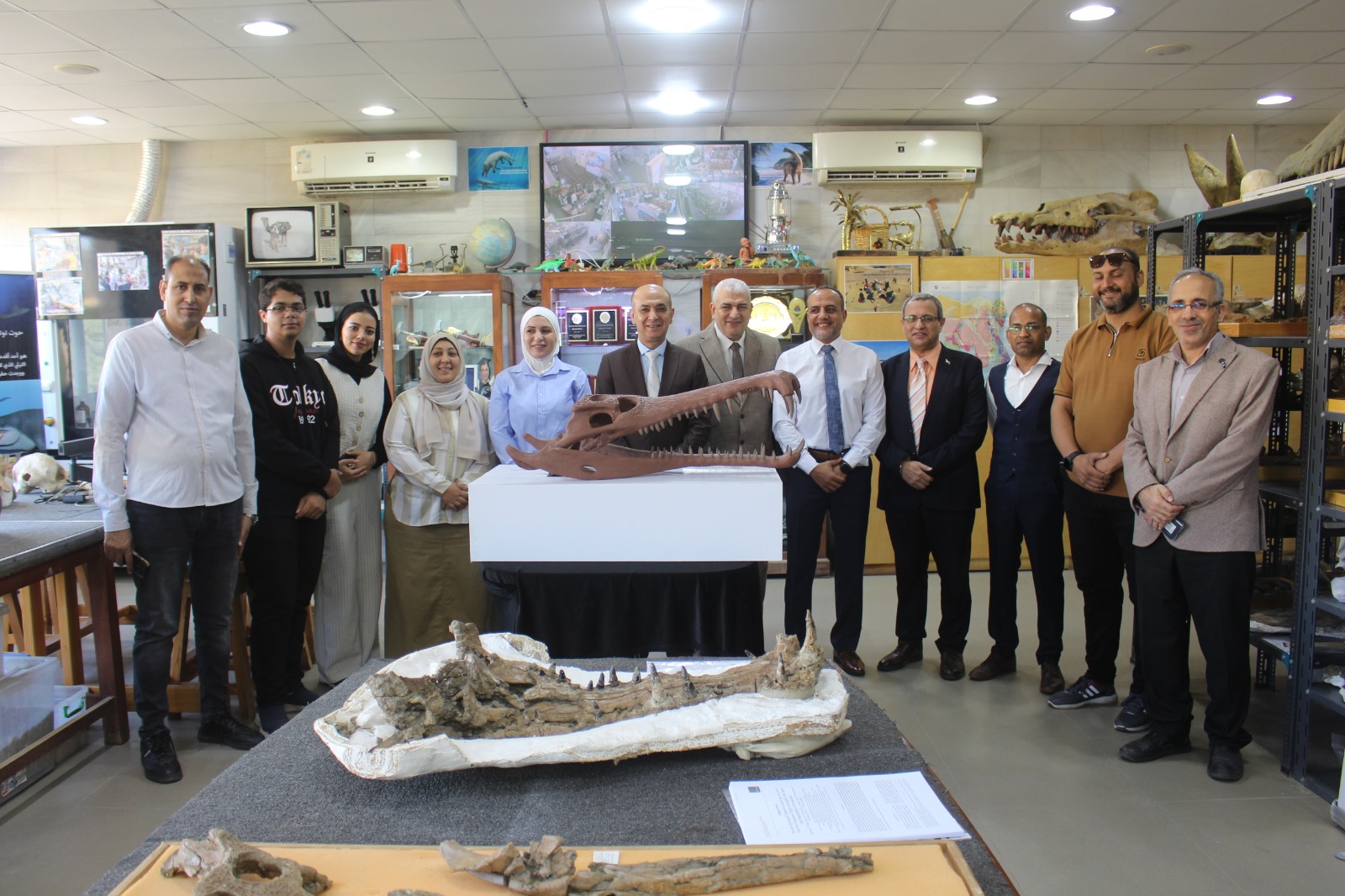In a move underscoring the university administration's support for major scientific achievements, Professor Tarek Ghalwash, Vice President of Mansoura University for Graduate Studies and Research, received the research team from the Mansoura University Vertebrate Paleontology Center (MUVP), led by its founder, Professor Hisham Sallam.
The congratulations were not limited to an office reception; Dr. Ghalwash also paid a special visit to the center's headquarters, where he met with the researchers and received a detailed briefing on the new global scientific discovery, expressing his immense pride in this achievement.
The visit was to congratulate the team on their successful discovery of a new species of crocodile dating back to the age of dinosaurs, 80 million years ago, in Egypt's Western Desert—a discovery published in one of the world's most prestigious international journals, The Zoological Journal of the Linnean Society.
During his visit, Dr. Tarek Ghalwash praised the exceptional efforts of the center's team, which place Mansoura University among the top global universities in this precise field. He affirmed that this discovery is a significant step in strengthening Mansoura University's leadership in advanced research, noting that the university, under the leadership of President Dr. Cherif Khater, gives special priority to distinguished research centers and works continuously to foster a scientific environment capable of producing high-impact discoveries that put Egypt at the forefront of the international scientific scene.
This global achievement involves the discovery of a giant crocodile that lived approximately 80 million years ago in the area known today as the New Valley Governorate, specifically in the Kharga and Paris oases. The team named the new crocodile Wadisuchus kassabi. The name carries purely Egyptian significance: "Wadi" refers to the discovery location, "Suchus" is derived from the name of the ancient Egyptian god "Sobek" (who had the head of a crocodile), and "kassabi" honors the memory of the late Egyptian scientist Ahmed Kassab, a pioneer in geology and paleontology.
The profound scientific importance of Wadisuchus lies in its being the oldest known member of the "Dyrosauridae" family a unique group of marine crocodiles that managed to survive the catastrophic extinction event that ended the age of dinosaurs, thriving in coastal and shallow sea environments afterward.
The research team led by Dr. Hisham Sallam, with Dr. Sara Saber (Assistant Lecturer at Assiut University) as the study's first author, and researcher Bilal Salem (PhD student at Ohio University) as a co-author explained that this crocodile was a skilled predator, measuring between 3.5 and 4 meters in length. It was distinguished by a very long snout with sharp teeth for hunting fish and had nostrils located on top of its snout to allow it to breathe easily at the water's surface.
At the conclusion of his visit, the Vice President reiterated his congratulations to Dr. Hisham Sallam and his team, emphasizing that they serve as inspiring models for young researchers and are a driving force for scientific innovation, which Mansoura University is always proud to support.
1.jpeg)
.jpeg)
